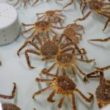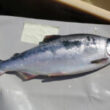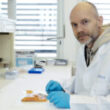BIO4ROBUST
Atlantic salmon biology in focus: for a robust fish in a shifting aquaculture industry

In this project we gather more knowledge on how to produce robust smolts, post-smolts and slaughter size fish in order to combine the full potential of RAS systems with sustainable fish production.
Start
01. Jan 2020
End
31. Dec 2022
Funded by
Nofima
Project Manager(s):
The production of Atlantic salmon in the last decade is being shifted from traditional to more intensive production systems, such as recirculating aquaculture systems (RAS).
Gather more knowledge
These performance-optimised systems are pushing fish biology to its limits. Biological processes thought to be fairly understood and controlled, such as smoltification and sexual maturation prevention, are now key challenges for production managers.
These challenges are resulting in higher fish losses as well as poor welfare, health and fillet quality. Therefore, it is necessary to gather more knowledge on how to produce robust smolts, post-smolts and slaughter size fish in order to combine to full potential of these systems with sustainable fish production.
Ambitions
The BIO4ROBUST ambition is:
- to investigate effects of photoperiodic and nutritional strategies on growth, lipid metabolism and sexual maturation;
- to study the effects of different digestible protein / digestible energy ratios and water temperature on smoltification, seawater transfer and maturation;
- to study the impact of nutrition and photoperiod on the (neuro)-endocrine pathway during early sexual maturation, from the level of gene expression to that of the production of steroid hormones;
- to investigate the effects of photoperiod and nutrition on barrier tissues, gonad development and immunity, including the development of artificial intelligence work packages for quantitative histology of tissues, and
- to develop tools to assess fat accumulation in fish and determine the metabolic consequences related to an excessive fat deposition in different fat depots.
A better understanding
It is anticipated that BIO4ROBUST will allow a better understanding and evaluation of the smoltification, seawater transfer and early sexual maturation phases, and ultimately of Atlantic salmon robustness through the use of new analytical tools, with substantial impact on the future Atlantic salmon production practices, and on welfare and performance assessment tools.
Publications
Strategic priority areas
Nofima invests its own resources in order to increase competence in useful, relevant and innovative areas and strengthen our position among the leading applied research institutes.





